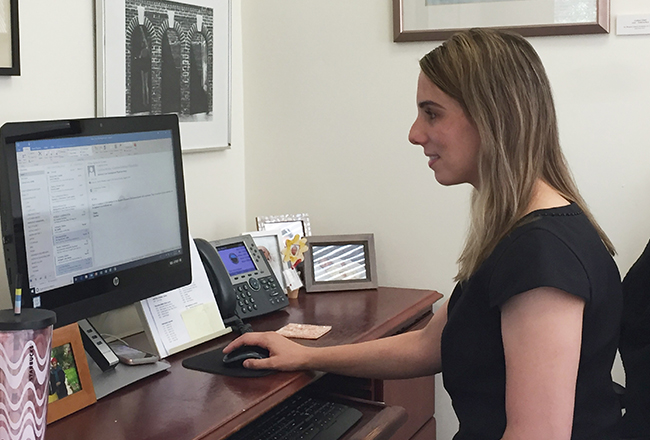
Every year the National Low Income Housing Coalition releases its “Out of Reach” report showing how much you need to earn to afford a modest apartment in your county. And every year Westchester County and Long Island rank among the least affordable places to live.
Buried in the report, however, I found evidence that should cause us to question the cost-effectiveness of the nation”™s largest program to develop affordable housing, the Low Income Housing Tax Credit program (LIHTC). This complicated subsidy gives investors dollar-for-dollar tax credits based upon the cost of affordable housing development, costing the U.S. Department of the Treasury about $8 billion per year.
The “Out of Reach Report” examines the hourly wage a renter would need to afford the typical two-bedroom apartment at the average or fair market rent. However, looking at the fair market rents in Westchester County, I nearly fell off my chair when I compared them to the rents in “affordable” apartments developed under the tax credit program. For the first time in the 30 years I”™ve been involved in the issue of affordable housing as a developer and nonprofit provider of emergency housing, I noticed that the fair market rents and the low-income rents in LIHTC projects ”” defined as affordable to a household with income up to 60 percent of the county”™s median income ”” have converged. In fact, the affordable monthly rent for a studio in a new low-income housing tax credit project is actually $50 higher than the fair market rent ($1,230 versus $1,180). Here”™s the comparison by apartment size:

Affordable housing comes at enormous cost
A sampling of recent tax credit projects in Westchester reveals that the average cost to create one unit ”” typically a one or two-bedroom apartment ”” is about $400,000, of which $300,000 is public subsidy from the LIHTC, state and county subsidy programs. Looked at another way, the public is paying about $300,000 per apartment to reduce rents by only $67 for a one bedroom, $107 for a two-bedroom, and create an “affordable” studio costing $50 more than fair market rent. If the goal is to cost-effectively develop affordable housing ”” defined as rent less than fair market ”” the LIHTC falls short. While some projects include lower rent units pegged to households at the 50 percent of area median income level, they represent no more than 20 percent of the units, and don”™t materially change the economic inefficiency of the program.
Seldom have so many paid so much for so little.
Fortunately, refocusing on the goal to create affordable housing may hold the key to an alternative.
It”™s all about the rent
If we refocus on a program to increase the supply of existing apartments with reduced rents for low-income families and individuals, we not only create affordable housing but may also advance other legitimate goals, such as giving low-income children an opportunity to grow up in neighborhoods with better schools.
Because it is much easier to convince municipalities to build market-rate housing and far more efficient because of the huge subsidies required for new affordable housing development, government could focus some of its efforts on creating affordable housing in existing apartments. Paying landlords to take qualified low-income families at reduced rents would not require any municipal approvals and cost about 25 percent of the current level of subsidies. In other words, paying landlords an upfront fee to reduce the rent to an affordable level for 20 or 30 years could create four times the number of new affordable apartments at the same cost.
How it would work
Landlords constantly have naturally occurring vacancies in their buildings. Under what I call the Vacant Apartment Acquisition Program, a landlord with a naturally occurring vacancy could receive a public subsidy in return for agreeing to reduce the rent to an affordable level. The lump-sum payment would come with an obligation by the landlord to cap the rents at an affordable standard and allow a nonprofit agency or government to fairly market and rent the unit to an income-qualified tenant. Property owners would allow the government to encumber the apartment for the next 30 years at an agreed-upon up-front fee. Based upon present value calculations, a landlord should be happy to receive an upfront payment of $70,000 in return for reducing the rent by $300 to a qualified tenant with household income up to 60 percent of the area median income, which is $63,200 for a family of three in Westchester County. The payment would be secured by a lien against the property that would require the landlord to comply with the guidelines or return
the money.
Instead of concentrating affordable units in low-income areas, exacerbating inequality, economic and racial segregation, let”™s say the government wanted to create some affordable housing in a higher opportunity area. According to RENTCafé, which tracks rentals, the average rent for an existing one-bedroom apartment in Scarsdale is $1,600 per month. The owner might be offered a one-time payment of $70,000 to reduce rent by $300 to $1,300, which would be adjusted each year to account for inflation. The $70,000 forgivable loan would come with a recorded lien by the granting government entity that would include a “recapture obligation,” binding the property owner to meet the terms of the forgivable loan for 30 years. In the event of default, the property owner would have to pay back the funding.
Our region continues to face an intractable affordable housing crisis that is not being met. It”™s time to try other approaches.
Alexander Roberts is executive director of Community Housing Innovations Inc. in White Plains. He can be reached at aroberts@communityhousing.org or 914-683-1010.
















